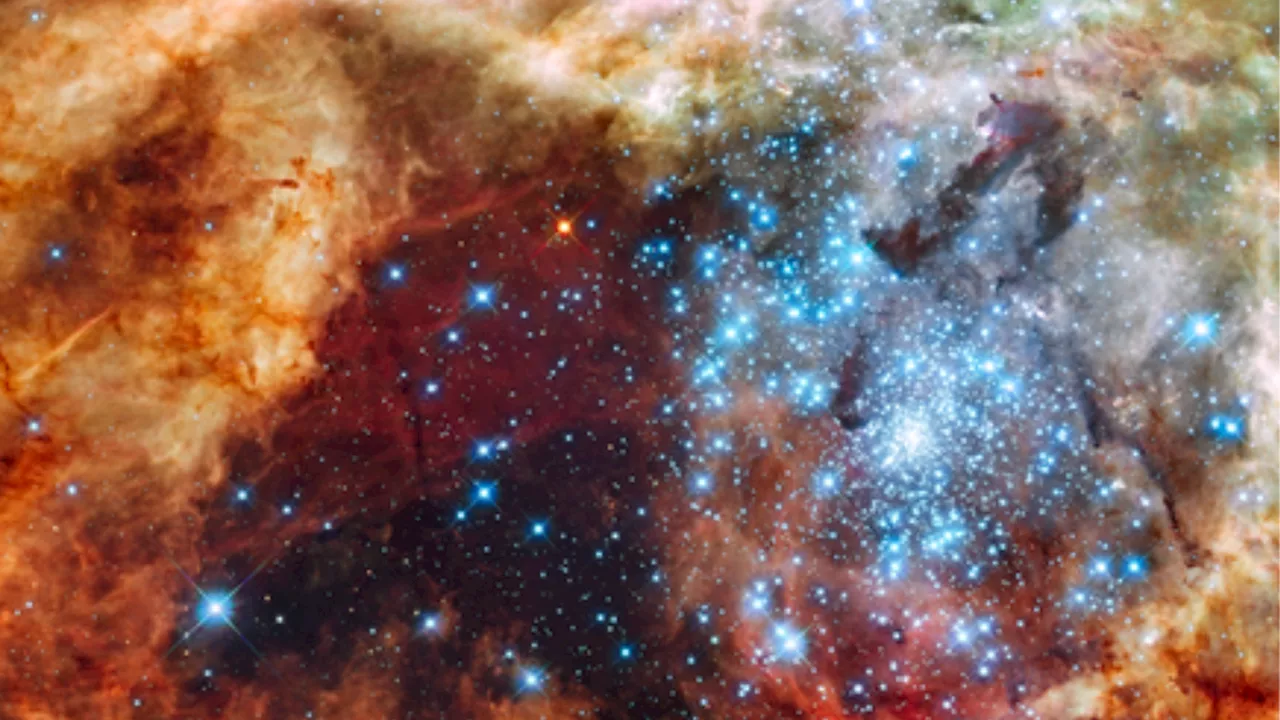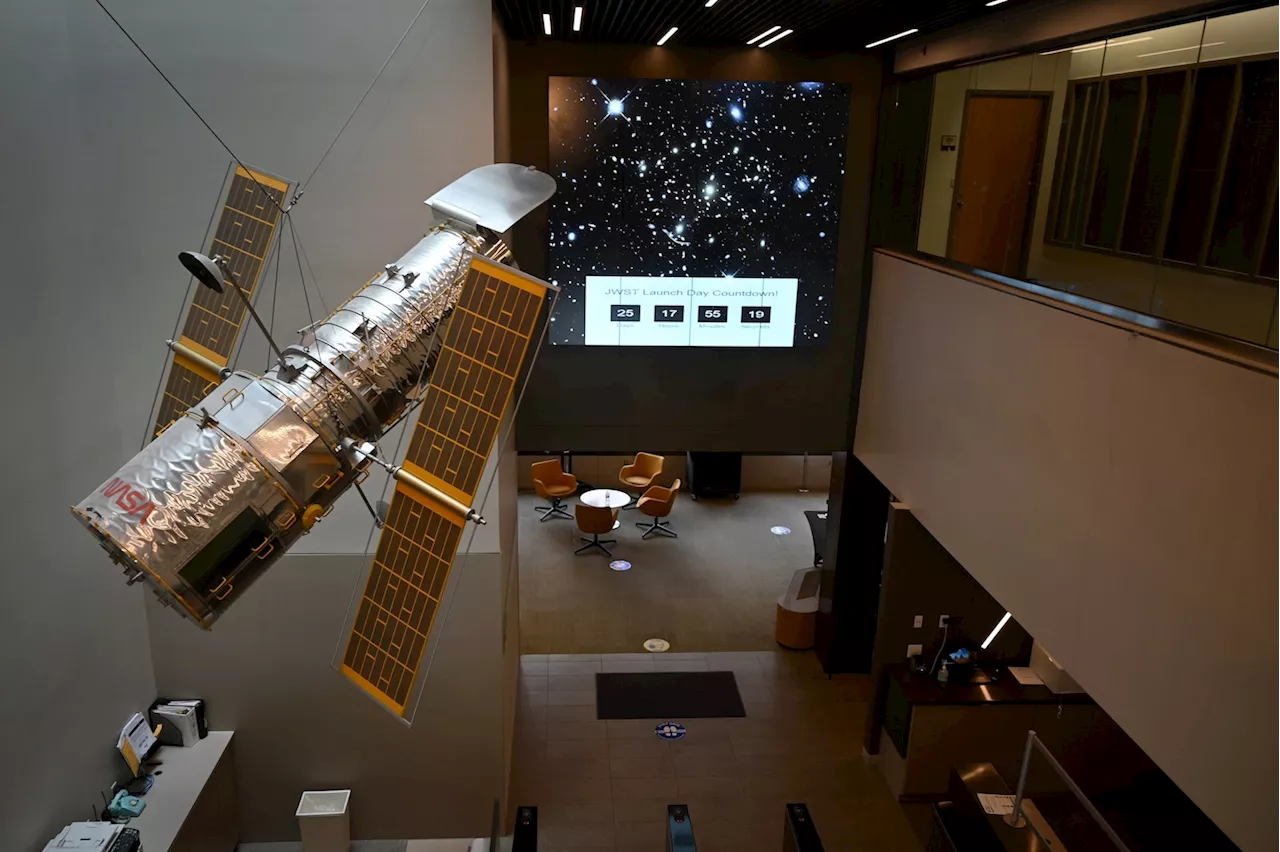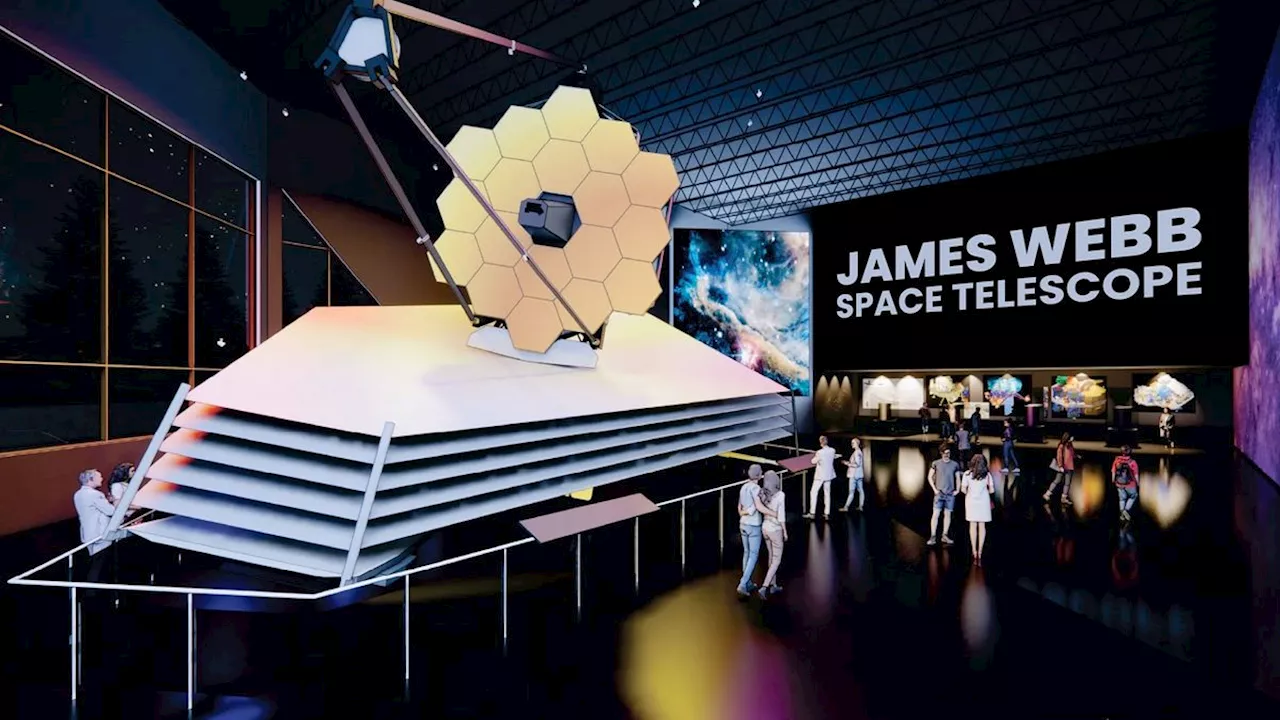Editor’s note: Sign up for CNN’s Wonder Theory science newsletter. Explore the universe with news on fascinating discoveries, scientific advancements and more.
LIVE: Severe storms threaten central U.S. with twisters, damaging wind. See the latest reports.Astronomers think the red giant star swallowed its companion, and by studying the ring, they could tease out “forensic evidence” of this cosmic, cannibalistic act.A new image from Hubble Space Telescope of Little Dumbbell Nebula, a dying star, was recently unveiled as the telescope marked 34 years in operation.
The nebula, 3,400 light-years away in the Perseus constellation, is an expanding shell of gases kicked out by a dying red giant star. The cosmic object is known as a planetary nebula, but it has nothing to do with planets. If researchers confirm the nebula holds evidence of a case of cosmic cannibalism, it could provide proof of the red giant’s long-theorized companion.The Little Dumbbell Nebula includes a ring, which, from our perspective, looks more like a central bar that connects two lobes on either side of the ring. Before the aging red giant star collapsed, it released a ring of gas and dust.
Ultraviolet radiation from the scorching hot star causes gases to glow in different colors representing different elements, such as red to indicate nitrogen and blue for oxygen.
United States Latest News, United States Headlines
Similar News:You can also read news stories similar to this one that we have collected from other news sources.
 Hubble Space Telescope finds bucket of cosmic Easter eggs — 500 blue and red starsRobert Lea is a science journalist in the U.K. whose articles have been published in Physics World, New Scientist, Astronomy Magazine, All About Space, Newsweek and ZME Science. He also writes about science communication for Elsevier and the European Journal of Physics. Rob holds a bachelor of science degree in physics and astronomy from the U.K.
Hubble Space Telescope finds bucket of cosmic Easter eggs — 500 blue and red starsRobert Lea is a science journalist in the U.K. whose articles have been published in Physics World, New Scientist, Astronomy Magazine, All About Space, Newsweek and ZME Science. He also writes about science communication for Elsevier and the European Journal of Physics. Rob holds a bachelor of science degree in physics and astronomy from the U.K.
Read more »
 NASA releases free e-book on Hubble space mysteriesData from the Hubble Space Telescope has enabled scientists to better understand the invisible universe.
NASA releases free e-book on Hubble space mysteriesData from the Hubble Space Telescope has enabled scientists to better understand the invisible universe.
Read more »
 James Webb Space Telescope full-size model to be displayed by Space FoundationRobert Pearlman is a space historian, journalist and the founder and editor of collectSPACE.com, an online publication and community devoted to space history with a particular focus on how and where space exploration intersects with pop culture. Pearlman is also a contributing writer for Space.
James Webb Space Telescope full-size model to be displayed by Space FoundationRobert Pearlman is a space historian, journalist and the founder and editor of collectSPACE.com, an online publication and community devoted to space history with a particular focus on how and where space exploration intersects with pop culture. Pearlman is also a contributing writer for Space.
Read more »
 Hubble telescope celebrates 34th anniversary with an iridescent Dumbbell Nebula (image)Sharmila Kuthunur is a Seattle-based science journalist covering astronomy, astrophysics and space exploration. Follow her on X skuthunur.
Hubble telescope celebrates 34th anniversary with an iridescent Dumbbell Nebula (image)Sharmila Kuthunur is a Seattle-based science journalist covering astronomy, astrophysics and space exploration. Follow her on X skuthunur.
Read more »
 Citizen scientists spot more than 1,000 new asteroids in old Hubble Telescope photosSharmila Kuthunur is a Seattle-based science journalist covering astronomy, astrophysics and space exploration. Follow her on X skuthunur.
Citizen scientists spot more than 1,000 new asteroids in old Hubble Telescope photosSharmila Kuthunur is a Seattle-based science journalist covering astronomy, astrophysics and space exploration. Follow her on X skuthunur.
Read more »
 Cosmic fountain is polluting intergalactic space with 50 million suns' worth of materialRobert Lea is a science journalist in the U.K. whose articles have been published in Physics World, New Scientist, Astronomy Magazine, All About Space, Newsweek and ZME Science. He also writes about science communication for Elsevier and the European Journal of Physics. Rob holds a bachelor of science degree in physics and astronomy from the U.K.
Cosmic fountain is polluting intergalactic space with 50 million suns' worth of materialRobert Lea is a science journalist in the U.K. whose articles have been published in Physics World, New Scientist, Astronomy Magazine, All About Space, Newsweek and ZME Science. He also writes about science communication for Elsevier and the European Journal of Physics. Rob holds a bachelor of science degree in physics and astronomy from the U.K.
Read more »